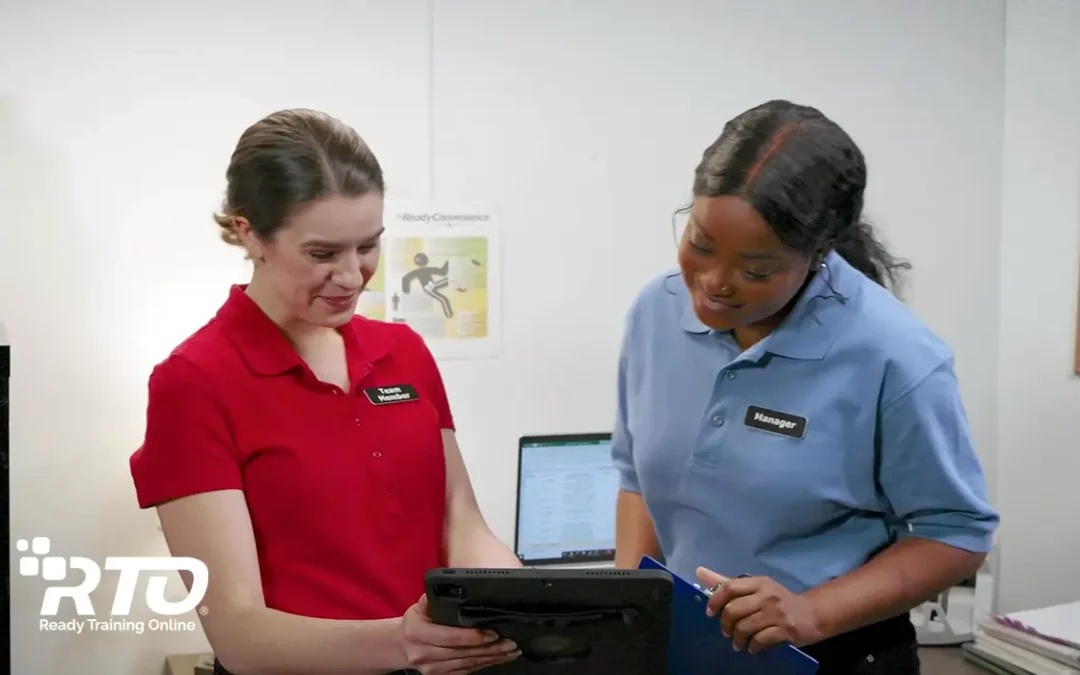Your convenience store employees have a lot of responsibility – from providing great customer service to maintaining compliance for age-restricted sales, they keep your store running smoothly. You may already be providing them with quality convenience store training to learn the skills they need to keep up with the demands of their jobs, but how do you ensure they’re actually retaining the knowledge they’ve been given? One method for increasing retention is to implement role playing as part of a blended learning strategy for training.
Benefits of Role Playing in Training
There are many benefits to using role play as part of your training strategy, beyond the increase in knowledge retention. Here are a few more benefits for your employees:
Builds confidence: When employees have the opportunity to act out certain situations in a safe environment before they’re expected to deal with the real thing, it will give them the confidence to react appropriately in a live situation. For example, practicing suggestive selling techniques through role-play will make them more comfortable suggesting items to customers and help increase sales.
Improves problem solving skills: Role playing gives employees a chance to develop problem-solving skills through practice. This will better equip them to handle difficult situations that may arise with customers.
Provides hands-on learning: Hands-on learning emphasizes training in a way that listening to a lecture or reading a document cannot. It helps to reinforce everything employees have already learned by putting that knowledge into practice.
Prepares employees for real scenarios: Certain situations your employees will deal with may seem intimidating for an employee with no experience – such as carding customers or refusing a sale. Practicing through role play will help them know exactly what to say and do.
Identifies and bridges skill gaps: Through the use of role play you can see where your employees might be struggling in certain situations and offer advice or further training to guide them and improve their skills.
Steps for Developing Role Play Training
In order for role playing to be successful for your employees, you need to take time to thoughtfully prepare.
Create your scenario: Determine what situation you would like your employees to role play. You will want to choose something that may be difficult for employees in a real situation, such as age-restricted sales, suggestive selling, or dealing with a difficult customer. Outline a script if necessary, but leave room for employees to improvise dialogue they’re comfortable with.
Assign roles: Determine who will be the employee and who will be the customer. You may want to have employees role play one way, then switch roles to get experience both ways.
Act out the scenario: Have the employees act out the scenario. If it’s possible to do it in the store or at the counter, in a real environment with no customers around, that would improve the realism of the scenario. Try to encourage employees to get into it and have fun while taking role playing seriously and not just goofing off.
Discuss feedback: Make sure to pay attention to the employees as they role play the scenario so you can provide feedback. See if they can figure out what they may have done right and where they can make their own improvements. Help them learn from their mistakes and make adjustments, then try again.
Tips for Successful Role Playing
To get the most out of using role playing with your employee training, keep these things in mind:
Create a safe space: In order for role playing to be successful, your employees need to feel comfortable enough to act out the given scenarios without feeling self-conscious. Make sure you create a safe space for them where they know they will not be made fun of or ridiculed for anything they’re doing. Impress upon them that this is a learning experience, and any feedback is not judgement but rather suggestions to improve their skills and make them better employees.
Provide a demonstration: If you want your employees to feel comfortable role playing, seeing their manager participate may help break the ice. Don’t be afraid to participate in role playing as well as provide demonstrations of the right or wrong ways to handle a situation. This may help employees who would normally feel uncomfortable in the situation relax and join in.
Use realistic scenarios: Make sure the scenarios you’re using for your role play situations are realistic for your convenience store. If you set up a far-fetched scenario that may never happen, your employees will gain nothing from the experience.
Blended Learning With trainingGrid®
Role playing works well when used as part of a blended learning strategy along with online training through a learning management system (LMS). trainingGrid® is an LMS developed with you and your employees in mind. Its intuitive design makes learning management simple and allows employees to begin training with just a click. This flexible system comes with a variety of robust features customizable to fit your needs in addition to built-in reporting and certification tools that track your compliance documentation.
Request a guided demonstration of trainingGrid® today!





